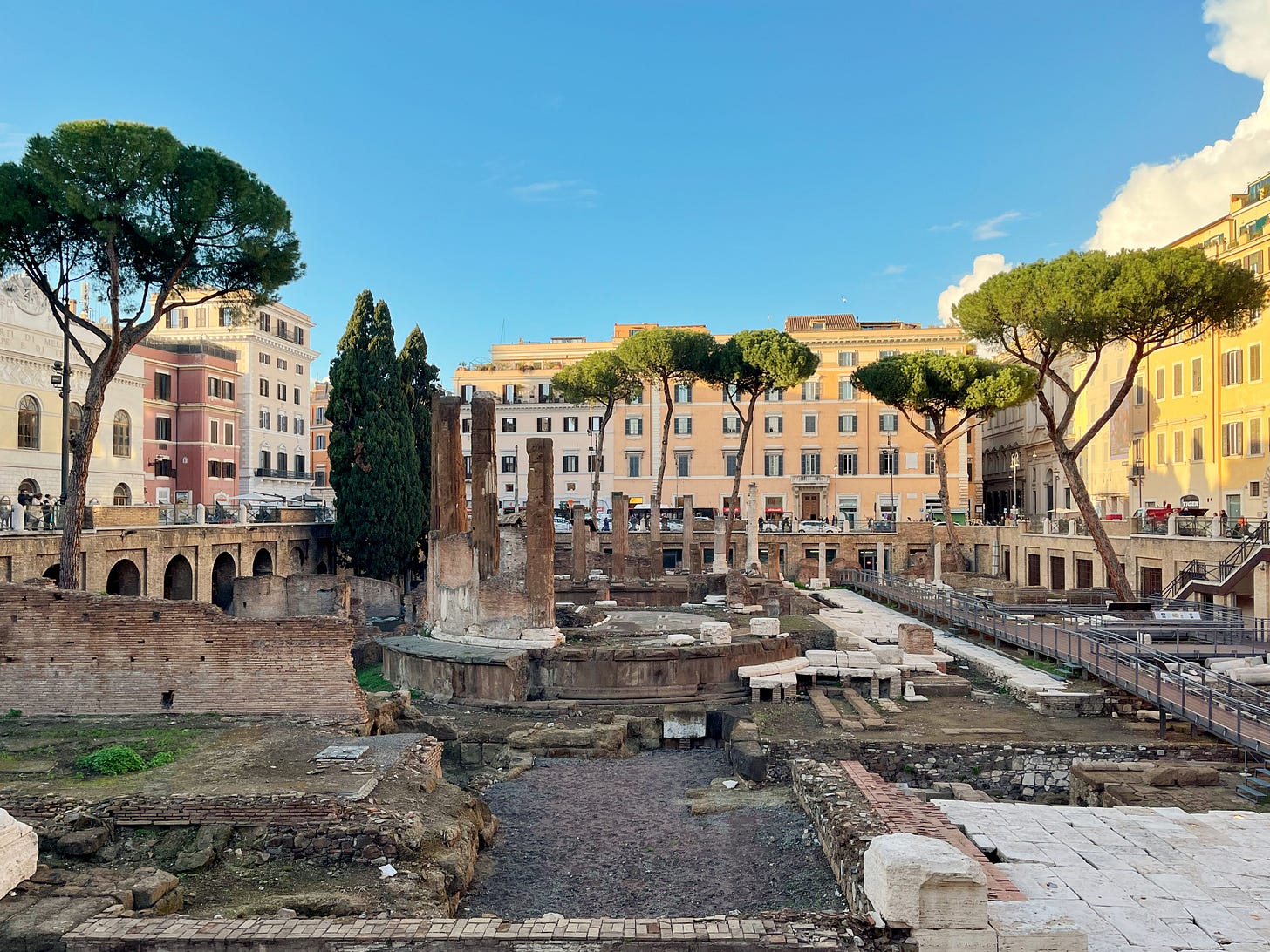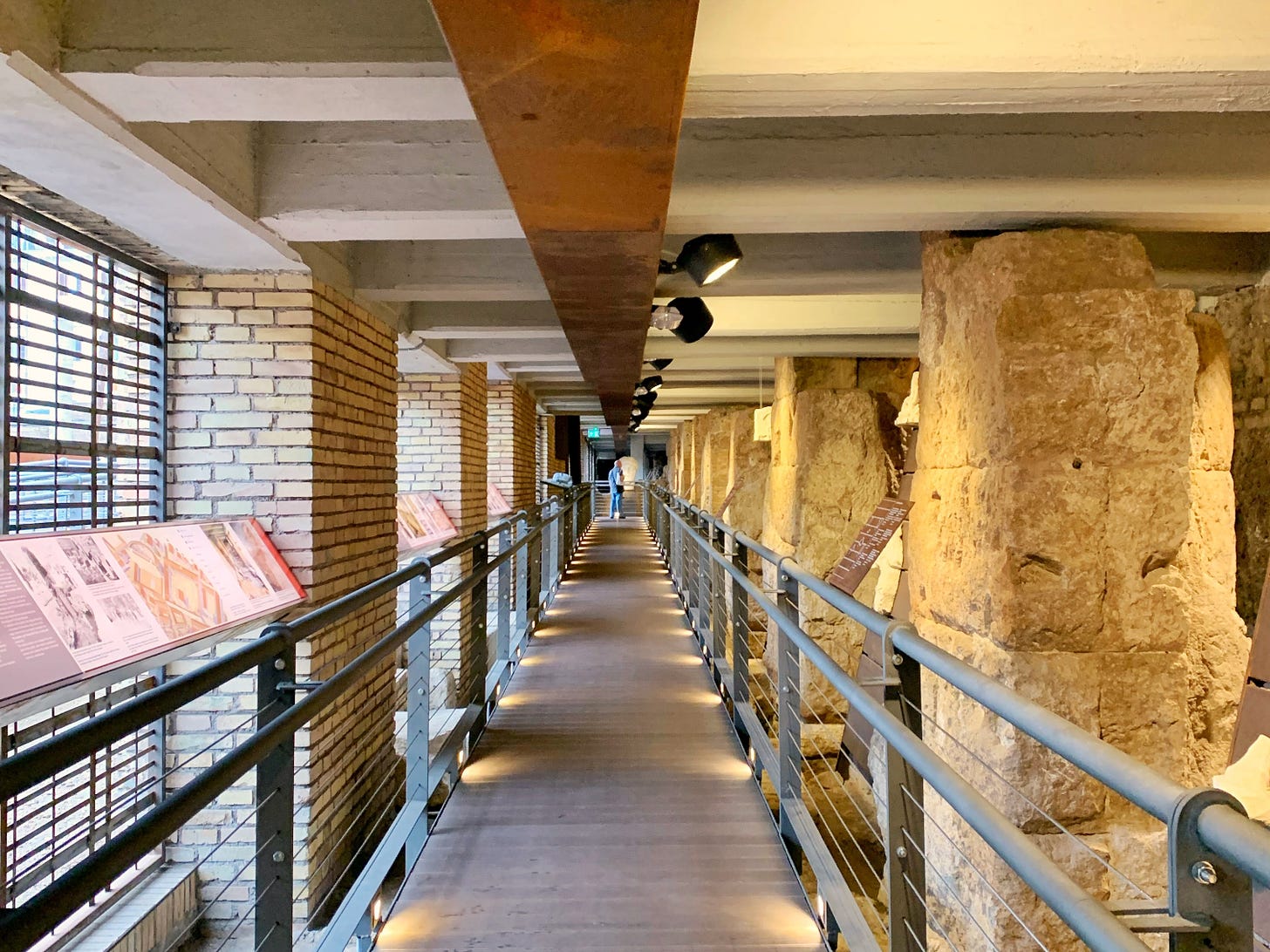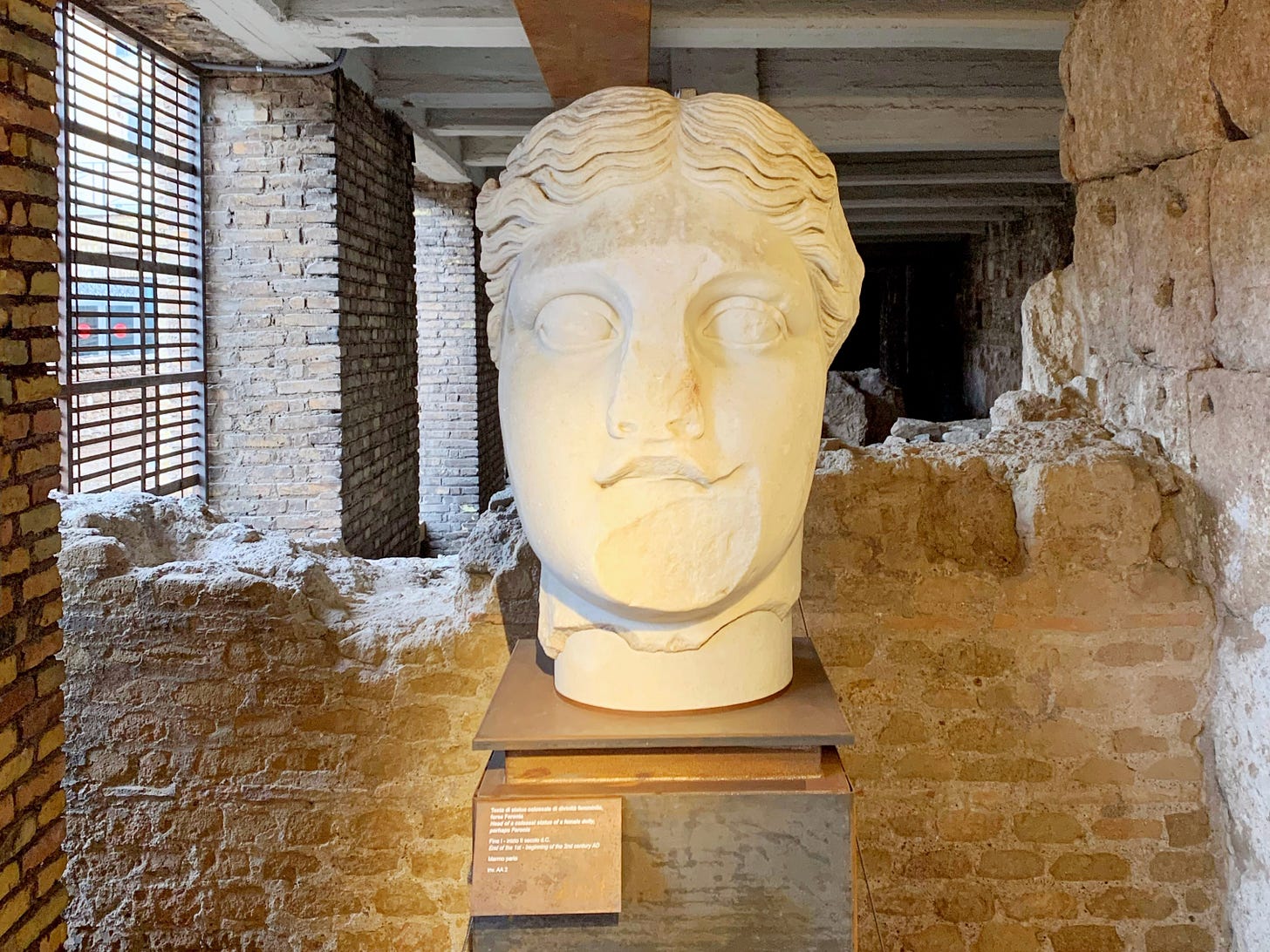Tell a Roman you’re going to Largo di Torre Argentina and they might assume you mean the transit hub. Countless people pass through this square in central Rome every day, getting on or off the dozens of buses and trams that stop there, many without giving a second thought to the ruins just below street level. But slow down and you’ll notice, in a sort of open stage set accessible only to the cats from the feline sanctuary who roam around them, truncated columns, crumbling walls, steps, and paving stones—all that’s left of four temples dating back to the Republican era around the 3rd century B.C.
Together they form the Sacred Area of Largo Argentina, which is believed to have witnessed one of the most important events in Greco-Roman history: the assassination of Julius Caesar. If you happened to pick up a copy of this month’s issue of Travel + Leisure, you might have seen my blurb about the restoration of Largo di Torre Argentina in the Discoveries section, but I think it deserves a bigger feature.
Funded by Bulgari, which restored the Spanish Steps and the Baths of Caracalla in 2016, the restoration saw the installation of a series of raised pathways that allow visitors to descend into the Sacred Area and get a closer look at the ruins. About half a million euros left over from the restoration of the Spanish Steps were allocated to Largo di Torre Argentina, and Bulgari donated another half million euros, bringing the project to a cost of one million euros. After a two year restoration, the site opened to the public last June and I went to see it as soon as I heard it was finally open.
The quartet of temples are among the oldest remains of Ancient Rome, as most of the city’s trademark ruins—including the Colosseum, Trajan’s Markets, and much of the Roman Forum—date to the Imperial era between 27 B.C. and 476 A.D. The Largo di Torre Argentina site was excavated in the 1920s, when Mussolini ordered the creation of a new neighborhood between Largo Argentina, Via Florida, and San Nicola dei Cesarini.
The quartet of temples, referred to by letters A through D, may give archeologists some clues as to the ways Romans decorated during the Republican era. Traces of the paint used to color the tuff stone support archeologists’ previous findings proving that the ancient world was much more colorful than what the gleaming white marble statues we see in museums would lead us to imagine. Archeologists are still debating which deities the temples were dedicated to, though the excavations of the 1920s unveiled some clues.
“During the construction underground, these extraordinary vestiges emerged, including the beautiful remains of a statue composed of different materials,” Maria Vittoria Marini Clarelli, the Sovrintendente Capitolina ai Beni Culturali, told me when I was researching the project. The marble head, arms, and feet, which are now housed at the Centrale Montemartini, are part of a colossal statue of the goddess Fortune that once stood 26 feet high and had a body made of wood covered in bronze. Archeologists believe that the round temple, Temple B, was probably dedicated to her.
The new exhibition space at Largo di Torre Argentina exhibits other architectural fragments, inscriptions, and heads of statues found in the area, among other relics. There is also a series of panels dedicated to telling the story of the site, from its origins until modern times, highlighting the construction of the 14th-century Torre del Papito and the 17th-century Chiesa di San Nicola dei Cesarini, which was torn down during the 1920s.
Even if you’re not an archeology buff, it’s worth visiting if you’re in the area and have some free time. A ticket only costs €5 and the site itself isn’t that large, so you can easily see it in less than an hour.
Further Reading
The restoration of Largo di Torre Argentina is one of the reasons why Rome was chosen for AFAR’s Where to Go in 2024 list. You can read my piece about Rome here.
For Architectural Digest, I wrote about another project that Bulgari financed: the restoration of the Torlonia Marbles collection of ancient Greek and Roman art. Check that article out here.
You can read about more of the city’s best ancient sites in this list I wrote for Fodor’s.
See all of the New Roman Times’ coverage of under-the-radar destinations here.









Looks amazing. I was hoping to get there while in Rome last month, but got sidetracked (as one does in Rome) between the Trajan's Market and Palazzo Massimo-- neither which I'd seen. As a veteran of high school theatre productions of Julius Caesar, I really can't miss this new site. Thanks for the info!
Thank you! I have wondered at the Republican temples (and the cats) over the years (decades). They presented an eye of calm admidst the chaos of Roman traffic. I am putting them on my bucket list to return!